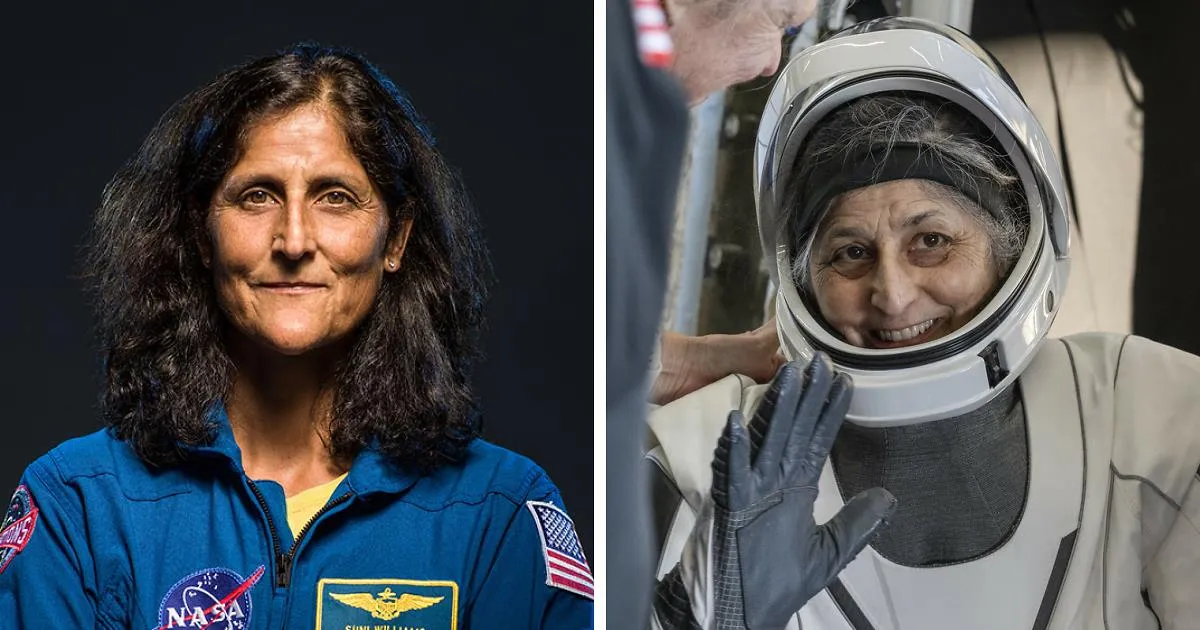
NASA astronauts Butch Wilmore and Suni Williams safely returned to Earth on March 18, 2023, bringing immense relief to their friends and families. What began as an anticipated eight-day mission extended dramatically to a challenging 250 days, primarily due to a series of technical issues with their spacecraft. This unexpected extension meant that the astronauts had to rely on a later scheduled SpaceX capsule for their return journey.
The journey back to Earth was fraught with challenges, including a fiery re-entry through the Earth’s atmosphere and a splashdown off the coast of Florida. Upon landing, Wilmore and Williams were greeted by a dedicated recovery crew that promptly retrieved them from the capsule hatch and placed them on stretchers. This procedure is standard for long-duration space missions, as the body undergoes significant strain when readjusting to Earth’s gravity.
As they exited the capsule, both astronauts appeared relieved and happy, yet social media users quickly pointed out a noticeable change in their physical appearance. Many described them as looking gaunt, with some speculating that the rigorous conditions of space travel had aged them significantly during their time away from Earth.
The physical toll of a 250-day-long mission is significant. Although astronauts like Wilmore and Williams adhere to strict exercise regimens while in space, the effects of microgravity are unavoidable. According to a NASA report, each astronaut engages in exercises designed to maintain their musculoskeletal system, typically dedicating an average of two hours per day to physical activity.
However, the reality is that astronauts can lose between 1% to 2% of their bone density each month, particularly in the hip and spine areas. For context, menopausal women and older men typically lose only 0.5% to 1% of bone density annually. Prolonged space travel leads to both bone and muscle atrophy, along with changes in blood flow that can adversely affect overall health.
Muscle loss is another critical concern for astronauts. The European Space Agency indicates that a loss of 10% to 20% of muscle mass can occur during shorter missions, and without proper countermeasures, this figure could escalate to as much as 50% for long-duration missions. This muscle atrophy is attributed to alterations in growth hormone levels, glucocorticoids, and reduced protein synthesis rates caused by the absence of gravity.
Changes in blood circulation can also lead to a condition known as Spaceflight Associated Neuro-Ocular Syndrome (SANS), which can result in increased pressure on the optic nerve and blurred vision. While many astronauts recover completely after returning to Earth, some effects can be long-lasting.
While Wilmore and Williams’ 250-day mission is significant, it is not the longest in history. That record belongs to Frank Rubio, whose mission lasted an astonishing 371 days. After returning on September 27, 2023, Rubio reported experiencing lower back pain and foot sensitivity, sharing insights into his recovery process in an interview with Time Magazine.
“The first two or three months after your return is really focused on recovery, just kind of reincorporating yourself into Earth and your family, while also rehabilitating your body,” Rubio explained, emphasizing the challenges of readapting to Earth’s environment after an extended period in space. He noted that it took him about two to three months to feel 90-95% as healthy as he was before his mission.
Both Wilmore and Williams are currently under close observation by NASA’s medical team at the Johnson Space Center. This monitoring is crucial during the first few days as their bodies adjust back to Earth’s gravitational pull. Experts remain optimistic about the astronauts' recovery, viewing their experience as a testament to the resilience required in the name of science.
Netizens have taken to social media to express their heartfelt admiration and congratulations to Wilmore and Williams for their bravery and dedication to space exploration.